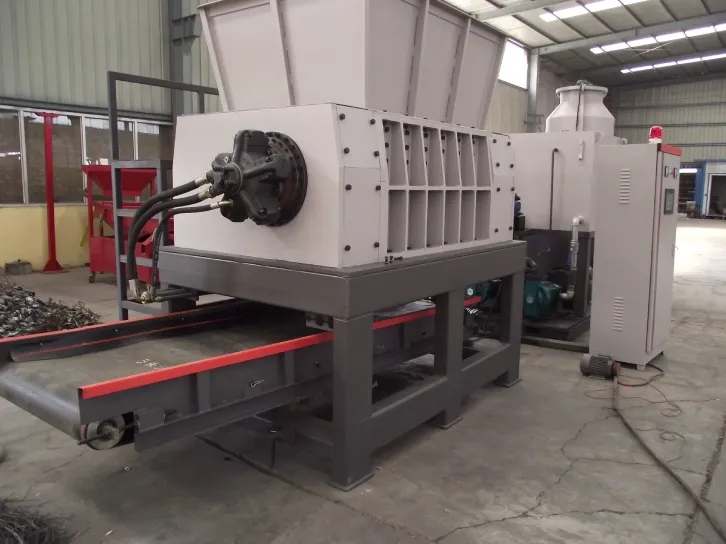

11월 . 24, 2024 16:30 Back to list
Iron Scrap Recycling Plant An Essential Component of Sustainable Industry
In recent years, the importance of recycling has taken center stage in the conversation surrounding environmental sustainability. Among various recyclable materials, iron scrap plays a significant role due to its abundant availability and the critical need for resource conservation in industrial processes. An iron scrap recycling plant serves as a vital facility that processes and repurposes this metal waste, offering a multitude of benefits both economically and environmentally.
What is Iron Scrap Recycling?
Iron scrap recycling involves collecting and processing discarded iron products—such as old machinery, vehicles, and construction materials—into reusable steel or iron. This process begins with the collection of iron scrap from various sources, followed by sorting, cleaning, and shredding. After this initial processing, the materials go through melting in a furnace. The molten iron or steel is then cast into new shapes, which can be used to manufacture a wide range of products, including construction materials, automotive parts, and household goods.
The Economic Benefits of Iron Scrap Recycling
An iron scrap recycling plant can significantly contribute to the economy. Firstly, recycling reduces the need for raw material extraction, which can be both costly and environmentally damaging. The mining of iron ore not only requires substantial resources, but also results in habitat destruction, increased carbon emissions, and water pollution. By utilizing recycled iron, the costs associated with mining and transportation are minimized, providing manufacturers with a more affordable and sustainable material source.
Moreover, iron scrap recycling creates jobs within the community. From collection and processing to sales and distribution, various stages of the recycling process require a workforce. Businesses involved in iron scrap recycling produce economic activity far beyond the plant itself, as they engage with suppliers, transport companies, and retailers, further boosting local economies.
Environmental Impact
The environmental advantages of iron scrap recycling are profound. Traditional iron production is highly energy-intensive and contributes significantly to greenhouse gas emissions. By recycling iron scrap, the energy consumption and pollution associated with producing new metals are drastically reduced. According to estimates, recycling iron and steel can save up to 74% of the energy required to produce steel from raw materials.

Additionally, recycling helps divert substantial amounts of waste from landfills. Large quantities of metal waste end up in landfills where they contribute to soil and water contamination. By reintroducing these materials into the supply chain, recycling plants play a crucial role in minimizing landfill waste and promoting a circular economy, where resources are reused and repurposed rather than discarded.
Challenges in Iron Scrap Recycling
Despite the considerable benefits, iron scrap recycling plants face challenges. One major issue is the fluctuation in scrap metal prices, which can be influenced by global demand, economic conditions, and competition. These fluctuations can impact the profitability of recycling operations and subsequently deter investment in new recycling facilities.
Another challenge lies in the quality of the iron scrap collected. Contaminants, non-ferrous metals, and different grades of steel can complicate the recycling process, impacting the quality of the final product. Implementing advanced sorting and processing technologies is essential for ensuring high-quality recycled materials, which in turn can meet the stringent specifications required by manufacturers.
The Future of Iron Scrap Recycling
As the global community strives for sustainability, the demand for recycled materials is likely to increase. Advances in recycling technology are set to enhance the efficiency and effectiveness of iron scrap recycling plants, enabling them to process a greater volume of materials and recover higher-quality outputs.
Furthermore, governmental policies and incentives aimed at promoting recycling practices will play a crucial role in shaping the future of iron scrap recycling. Increased regulations on waste management and support for green technologies can enhance the viability of recycling facilities and promote further investment in this sector.
Conclusion
Iron scrap recycling plants stand at the forefront of sustainable industrial practices. They not only contribute to reducing environmental impact and conserving natural resources but also bolster economic growth and job creation. As technological advancements continue to improve recycling processes and governmental support increases, the iron scrap recycling industry is poised for significant growth, playing a crucial role in building a more sustainable future. Embracing recycling is not just a responsibility; it's a necessary step towards a more sustainable and economically viable world.
Latest news
Troubleshooting Common Eddy Separator Problems
NewsJul.04,2025
The Role of Metal Recycling Plants in Circular Economy
NewsJul.04,2025
The Impact of Recycling Line Pickers on Waste Management Costs
NewsJul.04,2025
Safety Features Every Metal Shredder Should Have
NewsJul.04,2025
How Industrial Shredders Improve Waste Management Systems
NewsJul.04,2025
How Cable Granulators Contribute to Sustainable Recycling
NewsJul.04,2025